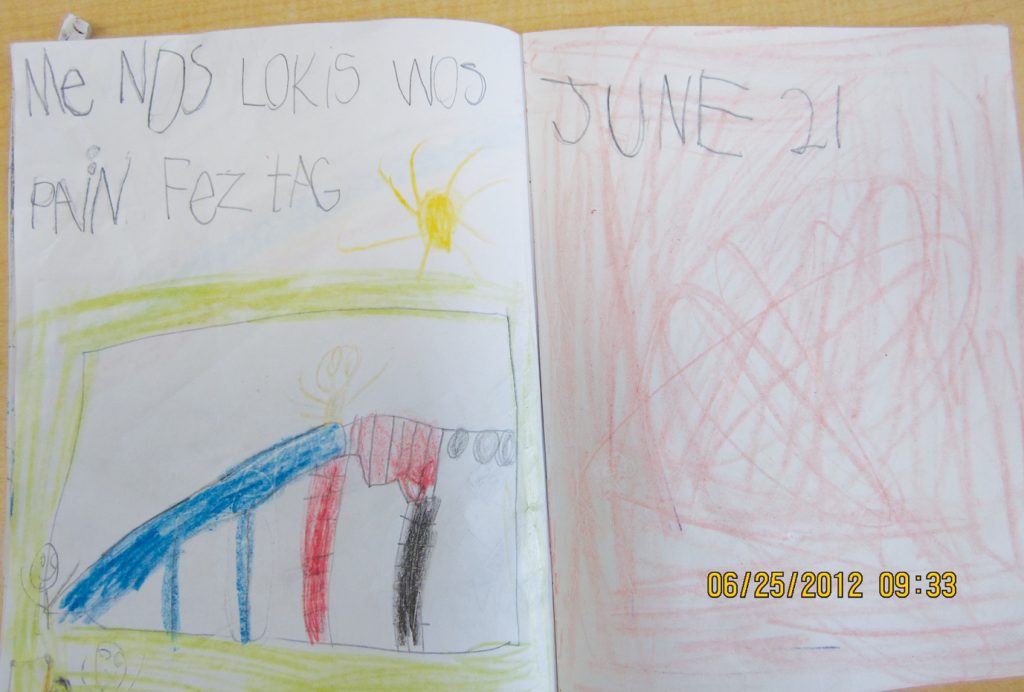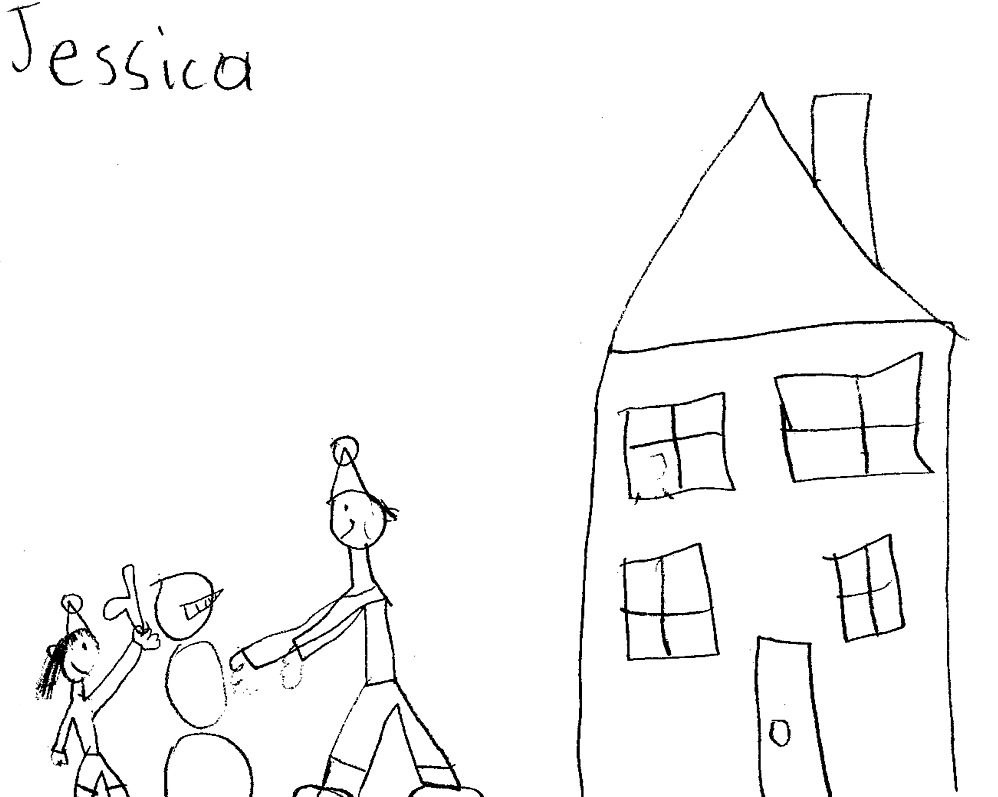An essential task for writers is to mine their bank of personal experiences to find that moment in memory that “tickled their brain”; that small nugget of images that recollects a pleasurable or interesting time worth recording. Teachers help this process with beginners by drawing and writing briefly about numerous “moments” that might have happened to them personally, or they draw and write in similar fashion about a specific class or individual student’s experience. Likewise, teachers talk out loud about those moments found in books they read to the children, labelling the learning by discussing the author’s use of details, feelings and imagery to create connections to the reader. In order for children to become comfortable and proficient at the process, much modelling from the teacher must occur.
In the mini-lessons that often accompany students drawing and writing about events from their own lives, we use pictures the students have drawn to help students create a simple one or two sentence “story” that tells about a single event in their life. At the very beginning, we encourage students to draw with details, to provide the action, the “who” and “where” of the story in their drawing. The goal is to have the child focus on a single event told with details rather than give the story in broad strokes. This helps students focus on the details that create powerful writing. For example, it is much better that a student writes, “We batted the floating balloons with our hands, laughing and swirling to the fast beat of the music in the birthday balloon dance” than “We danced at the birthday party.”
One useful tool to help teachers guide students through the process of telling a story from a picture is the Interactive White Board, sometimes called a Smart Board. Students’ drawings can be photographed or scanned to a computer and displayed while teachers and students work together to create a simple story with details, action and powerful words that depict strong visual images. A photograph from a digital camera of a classroom event or one of an individual student at play can be used to create a simple story at numerous times of the day: a few minutes after recess, just before you leave for the day, during the highlighting of a specific science topic, while creating stories for the “special helper” of the day. Asking parents to email some photographs of their child involved in happy activities can help a reluctant writer to find a personal moment they can draw and write about.
The importance of getting children to be reflective about the events of their life cannot be emphasized enough. Artists of all stripes know that the pause where one stops and looks more closely at a situation, noting all the surrounding visual details, and then the consideration of how best to record that moment is a necessary step of the artistic process. When we model, talk about, encourage and teach children to stop, take that moment and mine it for its details, consider how to display it or write it, we enrich their lives. We need to use all the tools at hand, including the great visual power of the Interactive White Board to help us teach this important skill.
Some examples of student art and writing that can be put on an interactive whiteboard.


ABOUT THE AUTHOR
Betty Schultze
Betty Schultze is a workshop presenter and the co-author of the newly revised edition of What’s Next For This Beginning Writer? by Janine Reid, Betty Schultze with Ulla Petersen.
This article is from Canadian Teacher Magazine’s Nov/Dec 2012 issue.












